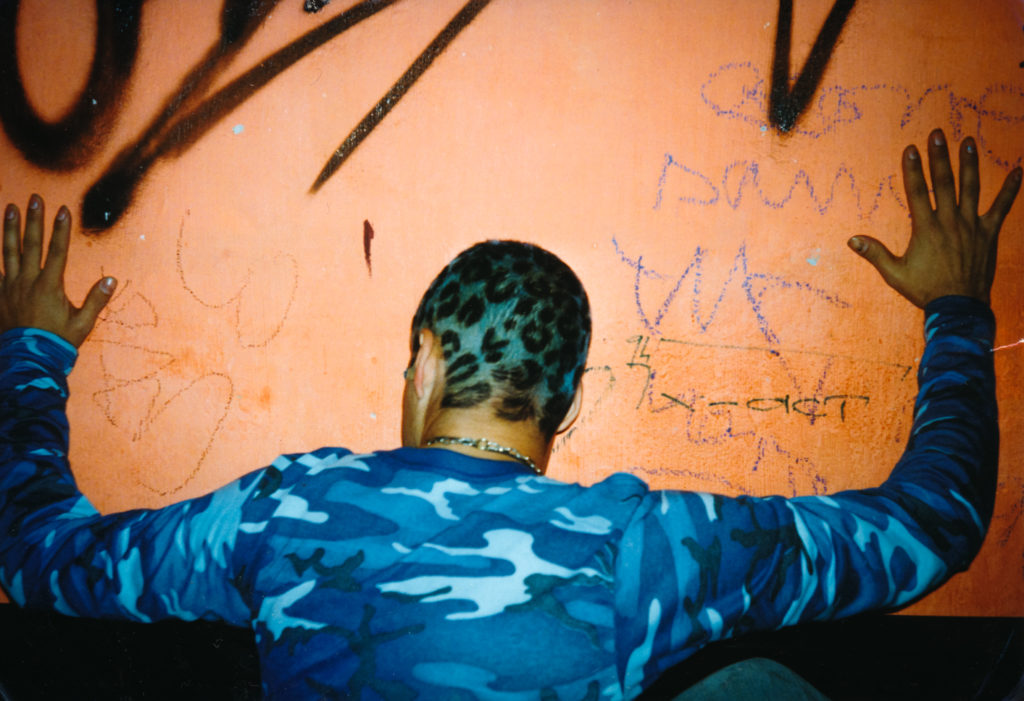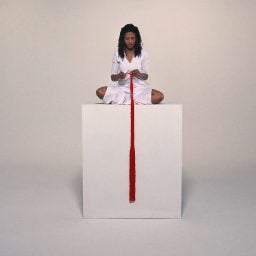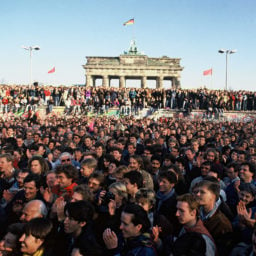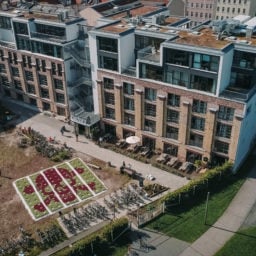This year’s Berlin Art Week takes place in the midst of an important anniversary: 30 years since the fall of the Berlin Wall. So it is not surprising that many of the exhibitions and events kicking off this week take their cue from the historic reunification of the city.
The Berlin art world is in a self-reflective mood, as several institutions, project spaces, and galleries have opted to put on Berlin-themed exhibitions that tackle an aspect of the city’s wild, sometimes painful, and complex recent history.
Many shows ask questions about how the German capital has changed since 1989. What have we learned? What was lost? And—this one is perhaps the hardest question to answer—where is this new cultural and commercial capital headed, exactly?
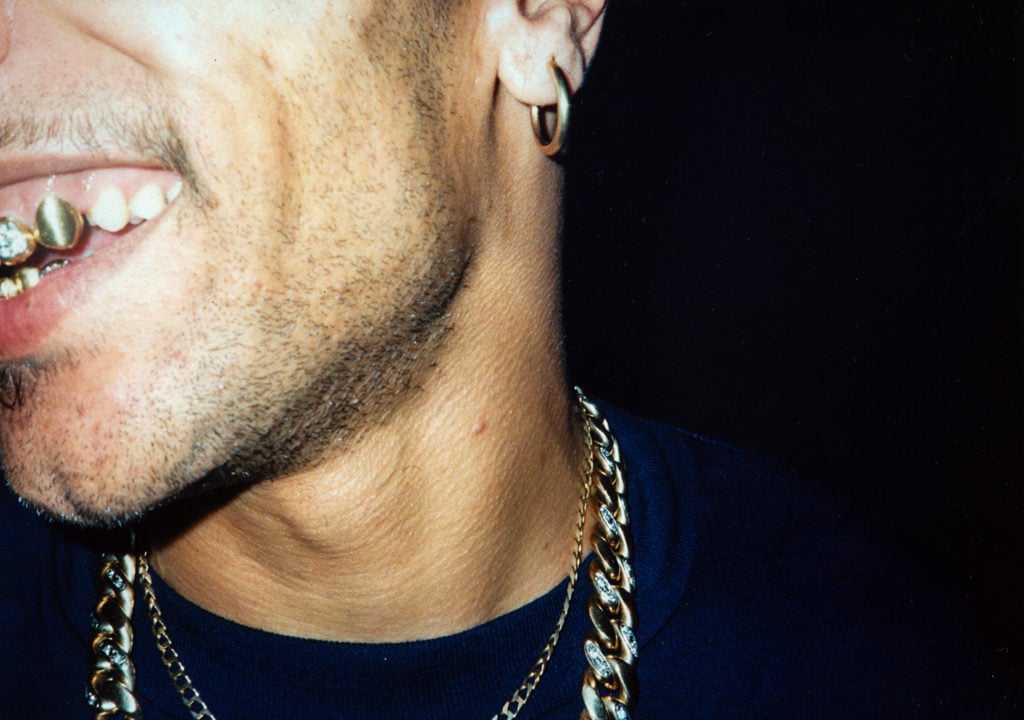
C/O Berlin, Tilman Brembs, Goldie, (1997). © Tilman Brembs.
Many exhibitions focus on Berlin’s dramatic post-war history, as East German and pre-war architecture serves as a poetic backdrop for events around the city. Positions Art Fair and art berlin are again being hosted in the historic 1930s Tempelhof Airport. At C/O Berlin, photographs and videos celebrate Berlin’s club culture—what the venue calls the “last big bang” of a cultural movement in Europe when, in the 1990s, clubs colonized the city’s abandoned buildings and free space. The show inevitably includes images by Berlin club culture’s most famous export, the photographer Wolfgang Tillmans.
At the the private space Collection Regard, photographer Patrick Tournebouef shows moody black-and-white images of the Berlin Wall taken between 1988 and 1989. He went on to document the fortified border’s transformation, slowly erased in large part, but with some fragments now monuments of its tragic history.
In the past decade especially, Berlin has become the site of conflicting visions of what it should become. (With the influx of new money, the old motto “poor but sexy” has never seemed quite so old.) Tech start-ups are proliferating while previously affordable spaces that would typically have been used by artists are increasingly becoming swallowed up by real estate developers.
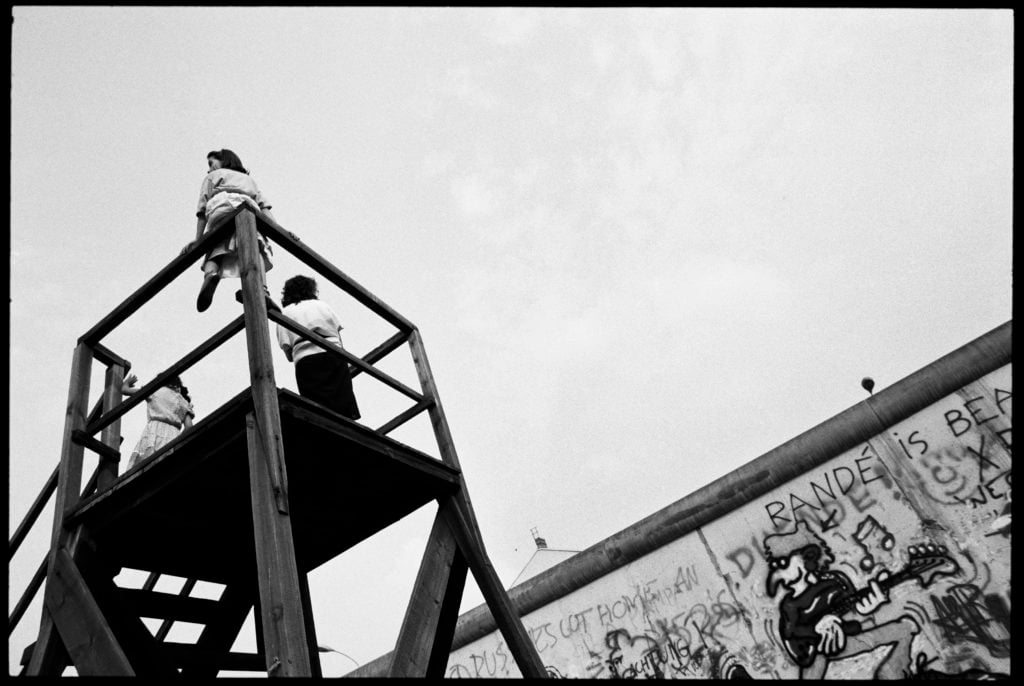
The Berlin Wall from the west, around 1988. Collection Regard © Patrick Tourneboeuf/Collection Regard.
“Walking Through Walls“ at the Gropius Bau is a group exhibition that explores the theme of sharing lives in a divided society. Other exhibitions face the city’s contemporary problems head on: Nearby at the Neuer Berliner Kunstverein, the exhibition “1989–2019: Politics of Space in the New Berlin” looks at the housing crisis in the German capital. It becomes clear, 30 years on, that deep divisions still exists between Berliners, including between its artists. (A recent study revealed shockingly low pay for artists and a housing and studio crisis.)
Of all the exhibitions and events taking place in Berlin Art Week, the Haus der Statistik is the most intriguing, if a little hard to read. There’s not much to see here within the 50,000 square meters of the semi-ruined, former East German office buildings, but its blown out windows, colonizing trees and brush, and graffiti-sprayed rooms make for enough of a spectacle.
Different initiatives have occupied the massive space as an artistic response to Berlin’s gentrification: There is a radio station, a crowd-funded bee hive, an art installation that reacts to pigeon movements and addresses the birds’ eventual “eviction,” as well as a conference this weekend on the future of the building. The multifaceted art project is trying to set out different visions for what little common space is left in Berlin, while asking how art gestures can be transformed into sustainable alternatives to gentrification.
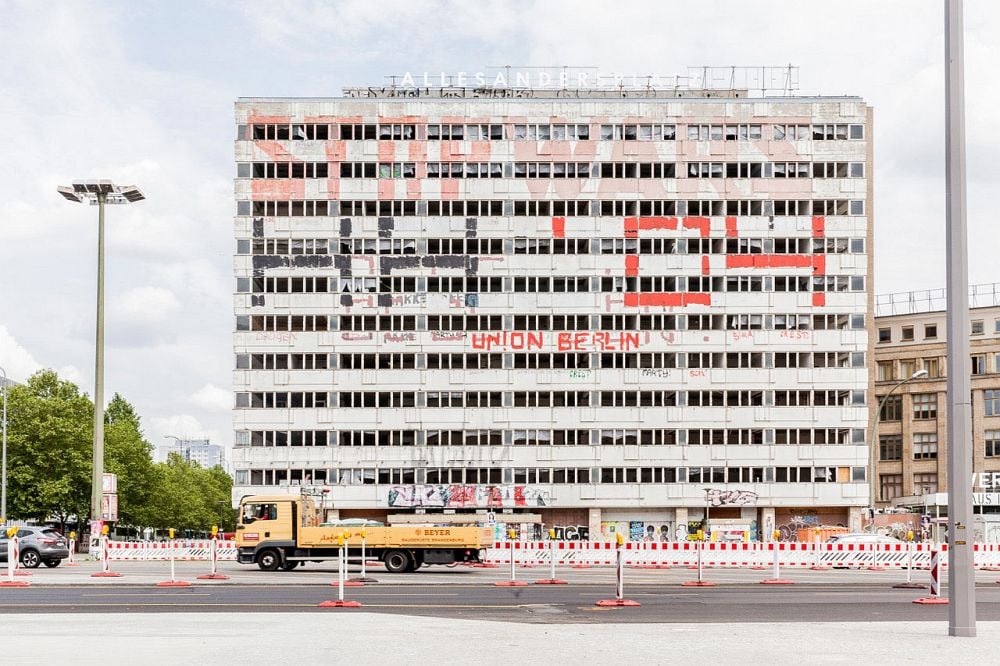
Haus der Statistik. Photo: Victoria Tomaschko.
At the Berlinische Galerie, artist Bettina Poutsch tries to stop time. Her massive black-and-white photographs show time pieces around the world set to exactly 1:55 p.m. Called World Time Clock, it is inspired by a famous GDR-era landmark that shows time in major cities around the globe at Alexanderplatz, a stone’s throw from the Haus der Statistik.
But that was then, and this is now. Tech entrepreneurs have made Berlin the Silicon Valley of Europe. Artists and gallerists are facing exorbitant rent rises. There is a danger that Berlin Art Week could be a collective wallow in nostalgia. Are we learning from the past, or are we hiding in it?
